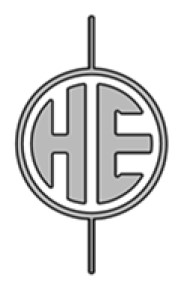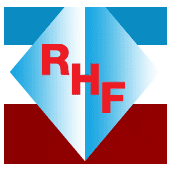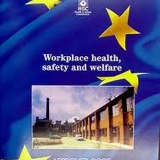Information
-
Document No.
-
Risk Assessment Title
-
Client / Site
-
Conducted on
-
Prepared by
-
Location
-
Service Technicians Names:
Risk Assessment Header
-
This Risk Assessment MUST be completed before starting the task, this is a layer of protection to reduce the hazards and risks to yourself and others, it will also help us to identify any Life Threatening, Life Altering or Fatal Potential (SIF).
-
Job Reference Number:
-
Site Address:
-
Scope of Works:
General Risk Assessment Questions
-
Things to Consider:-
P - People e.g. who might be at risk?
E - Equipment e.g. what equipment is to be used?
M - Materials e.g. what materials are to be used?
E - Environment e.g. where, when, hot, cold, cramped, high etc? -
Risk reduction Measures:-
E - Eliminate e.g. remove the process, article or substance
R - Reduce e.g. a safer product or substance
I - Isolation e.g. guards, barriers, remote operation, Lock Out Tag Out etc
C - Controls e.g. safer place to work, training , supervision, reduce exposure
P - PPE e.g. personal protective equipment
D - Discipline e.g. accountability, posters, signs etc -
Have you reported in?
-
Are you aware of the customers site safety rules, emergency procedures and their rescue plans if working at height?
-
Are you and the machine in a safe and suitable environment?
-
Are you equipped with the correct PPE for the task?
-
Do you have all the necessary tools/equipment to carry out the task safely?
-
Are any power tools to be used in a safe and good condition?
-
Add media
-
Are you aware of local environmental procedures for oil spillages, pollution, noise etc?
-
Are all personnel protected from falling objects?
-
Have all precautions been taken to prevent fire, electrocution, burn, falls, crushing, trapping risks?
-
Is there sufficient natural light/artificial lighting to complete the task safely?
-
Are you or other personnel suitably qualified to operate any of the crane/equipment in use?
-
Is all lifting equipment/Working at height equipment certified and in the correct test period?
-
If using hazardous substances, do you have all the relevant safety data sheets and hazard information available?
-
Have you made the customer aware that lone working is not permitted?
-
WARNING - if the answer to any of the above is "NO", PAUSE, ASSESS and RESOLVE the issue with the customer. If this is not possible then escalate this your supervisor/manager immediately.
Life Saving Behavior Questions
-
Can I stand clear of the danger Zone from unstable/suspended loads?
-
Can I follow my Lifting Plan, NO PLAN, NO LIFT ?
-
Can I check that my interlocks and guarding work correctly on my equipment and I never bypass them?
-
Can I position myself in a safe zone in relation to moving equipment?
-
Can I protect myself from falls at height?
-
Can I verify isolation - Lock, Tag, Try - when work involves hazardous energy?
-
Can I obtain authorization and validate air quality before entering a confined space?
-
Can I wear my seat belt?
-
Have I PAUSED and asked for help from my supervisor/manager if a condition is not safe or I cannot take these actions. <br>If a NEAR MISS occurs, I will report it immediately?
Risk Assessment Review
-
How many people are working on this task?
- 1
- 2
- 3
- 4
- 5
- 6
- 7
- 8
- 9
- 10
-
A "Toolbox Talk" or "Discussion" MUST occur so that all those involved in the activity are aware of the existing hazards and risks, including the control measures applied during the activity.
-
Please now select the date and time of completion of this Risk Assessment below.
-
Select date
-
Signatures of Service Technicians
-
Signature of Customer
-
Has the TEAM changed?
-
If "YES", please ensure that the new team are aware of the contents of this Risk Assessment including the controls that must be followed to reduce the risk to the team and the customer
-
Have New Hazards or has the SCOPE of Work changed?
-
If new hazards or the SCOPE of Work changes either by a customer request or following investigation of the initial report, then a job PAUSE, RE-ASSESS the hazards and risks MUST take place. If the hazards have not changed you can continue.
If the hazards have changed, then a review of the control measures and a discussion with customer MUST take place to ensure that all parties are aware.













